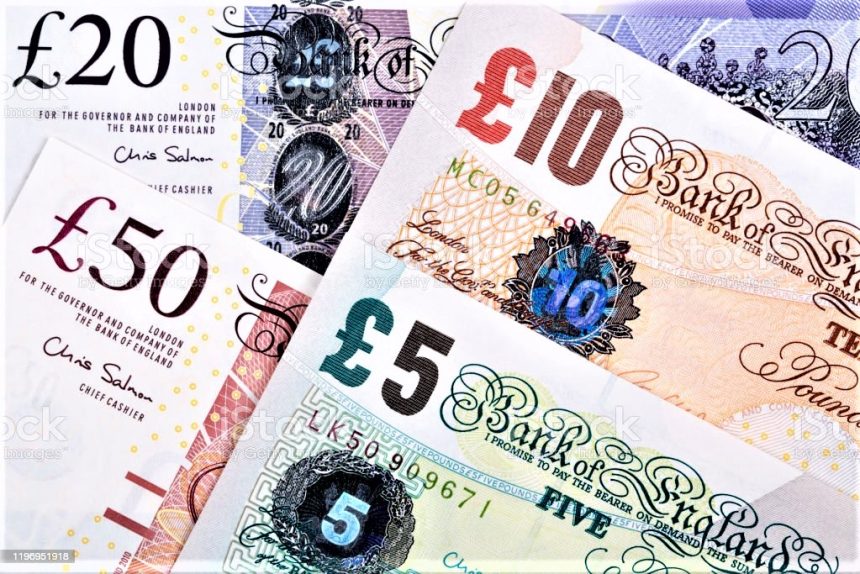The Pound Sterling (GBP) started the week on a firm footing, hovering close to a two-week high against the US Dollar (USD) as investors position themselves ahead of a critical batch of economic data from both sides of the Atlantic. At the time of writing, the GBPUSD pair trades around 1.3475, just shy of Friday’s high of 1.3476.
The upbeat tone in Sterling is supported by the Bank of England’s cautious approach to monetary easing, a backdrop of sustained Fed rate cut expectations, and an environment of relatively stable risk sentiment. Meanwhile, the US Dollar Index (DXY) remains subdued, with traders awaiting fresh catalysts from Tuesday’s US CPI release and the looming US–China tariff deadline.
Bank of England’s Narrow Rate Cut Decision Supports Pound Sterling
Last Thursday, the Bank of England reduced its benchmark interest rate by 25 basis points to 4.00%, a decision passed by a slim 5-4 margin within the Monetary Policy Committee (MPC). The close vote underscores the internal split over how quickly the Bank should move to ease policy.
The BoE described its future approach as “gradual and careful,” signaling that while rates may drift lower in coming months, the pace will be measured. Market pricing now suggests the next cut is not fully expected until February 2026, compared to December in previous expectations.
BoE Chief Economist Huw Pill reinforced the cautious stance on Friday, noting:
“There’s still a little bit further downward to go with Bank Rate. I think the pace at which those downward moves perhaps go forward is a little bit less clear than the pace that we’ve seen over the last year.”
Such remarks have tempered the prospect of rapid monetary easing, providing a modest tailwind to the Pound.
Fed Rate Cut Bets Keep USD Under Pressure
In contrast, the US Dollar remains soft as traders continue to price in aggressive policy easing from the Federal Reserve. The CME FedWatch tool shows a 90% probability of a 25 bps cut at the September meeting, with a non-negligible chance of a larger 50 bps move before year-end.
This shift in expectations follows a weaker-than-forecast July Nonfarm Payrolls report, subdued wage growth, and tepid manufacturing data. Over the weekend, Fed Governor Michelle Bowman stated she now sees three interest rate cuts this year, citing a less dynamic labor market and slowing economic growth.
Geopolitical Watch: US–China Tariff Deadline
Beyond central bank narratives, traders are watching the August 12 US–China tariff deadline. Any escalation in trade tensions could trigger a risk-off mood, potentially benefiting the USD in the short term while denting Pound bullish momentum.
Data Calendar – The Week Ahead
Tuesday, 12 August – UK Labour Market Report:
ILO Unemployment Rate (expected): 4.7%
Average Earnings ex-bonuses (expected): +4.7% YoY (prior: +5.0%)
Markets will assess whether UK employers remain reluctant to expand payrolls amid higher social security contributions and uncertain demand outlooks.
Tuesday, 12 August – US CPI Data:
Headline CPI (expected): +2.8% YoY
Core CPI (expected): +3.0% YoY
The inflation figures will play a pivotal role in shaping Fed policy expectations for September and beyond.
Technical Analysis – GBPUSD Daily Outlook
On the daily chart, GBPUSD has maintained its position above the 20-day and 50-day Simple Moving Averages (SMA), signaling sustained bullish momentum.
RSI (14): 58 – indicating positive momentum but shy of overbought conditions.
MACD: Positive histogram and a signal-line crossover confirm bullish bias.
Key Levels to Watch:
Support: 1.3440, 1.3400, 1.3340
Resistance: 1.3500 (psychological), 1.3550, 1.3600
A decisive daily close above 1.3500 could pave the way for an extension toward 1.3550–1.3600. Conversely, a break below 1.3440 would shift the near-term tone to neutral, exposing the 1.3400 handle as the next downside target.
Conclusion
Sterling’s near-term trajectory hinges on the outcome of this week’s macro events. The BoE’s reluctance to accelerate its easing cycle has given Pound a short-term floor, while persistent Fed cut expectations continue to limit USD upside. However, the convergence of the UK labour market report, US inflation data, and a key geopolitical deadline makes this a high-volatility week for GBPUSD traders.
From a technical standpoint, the pair’s structure remains constructive above 1.3440, with the bulls eyeing a breakout over 1.3500 to extend gains. A failure to hold above near-term support, combined with stronger-than-expected US inflation or risk-off flows from trade headlines, could reverse recent momentum.
For now, Sterling’s resilience suggests traders are positioning for a potential upside surprise from UK data or at the very least, for the Fed narrative to remain USD-negative in the weeks ahead.









